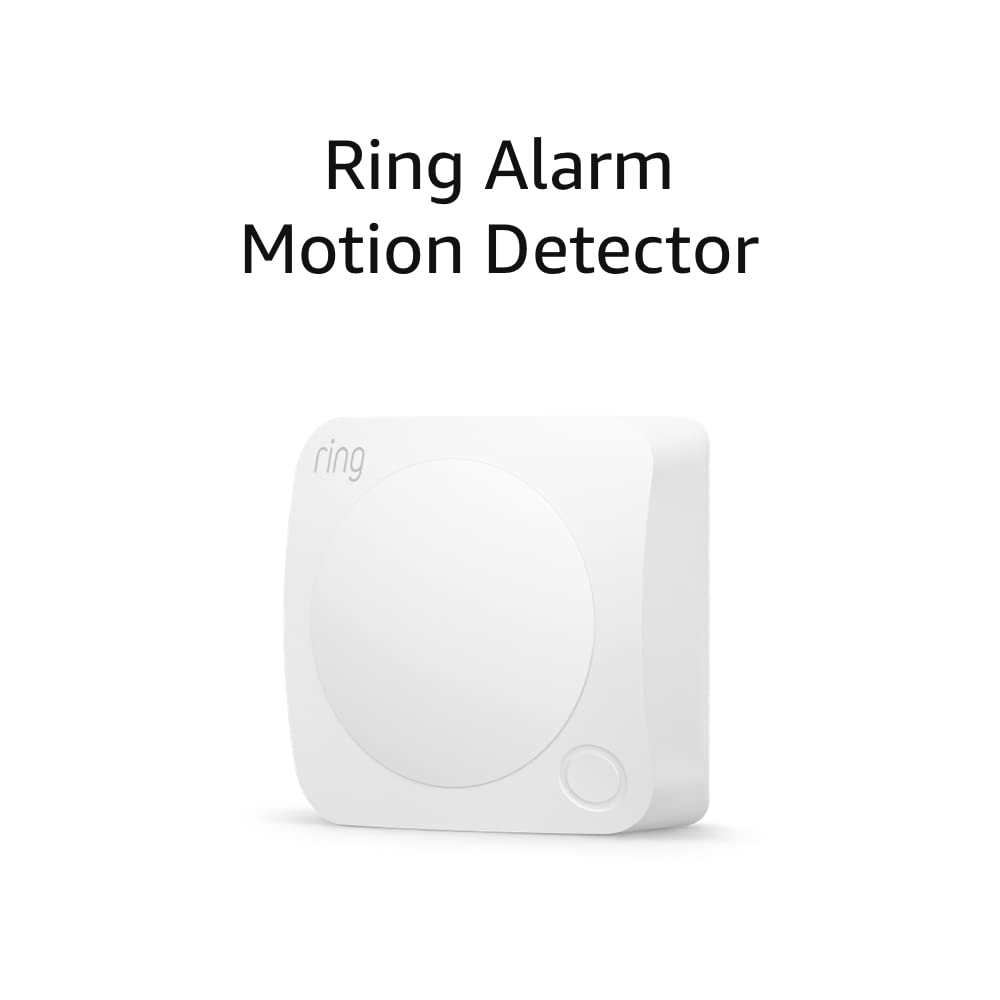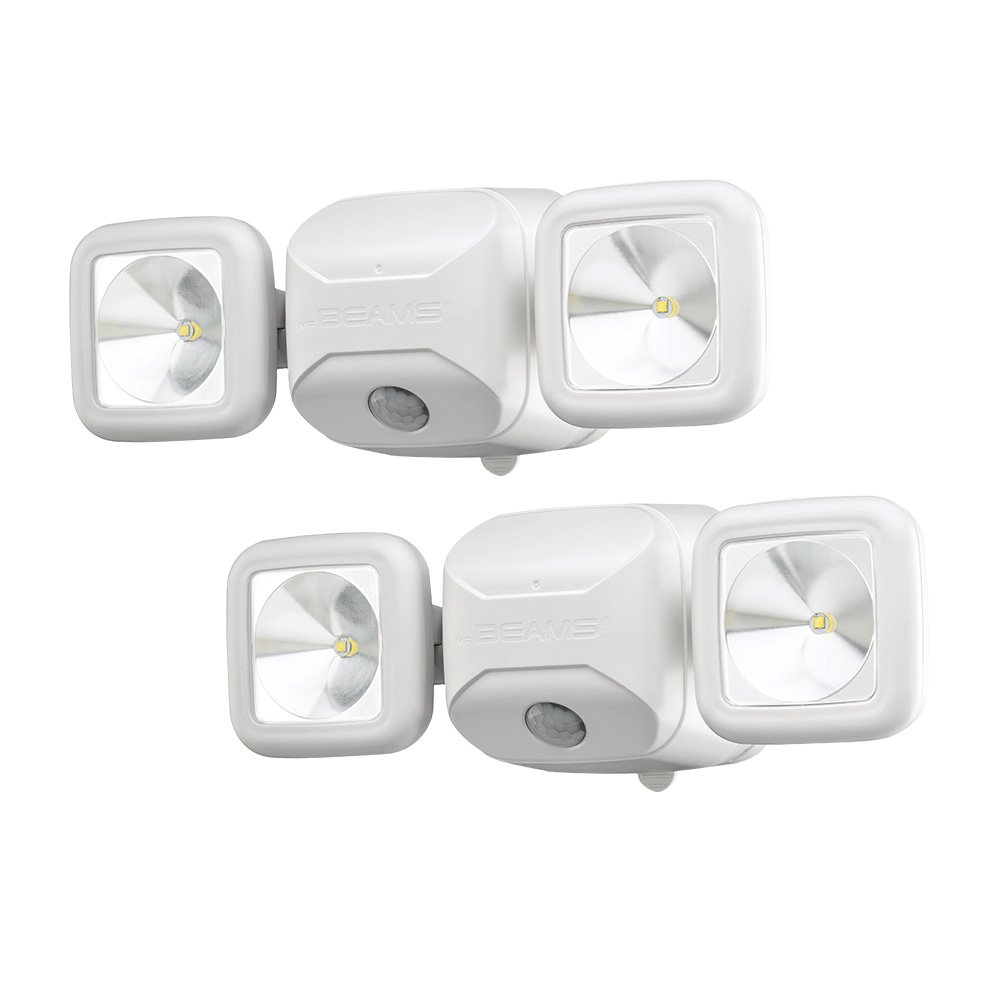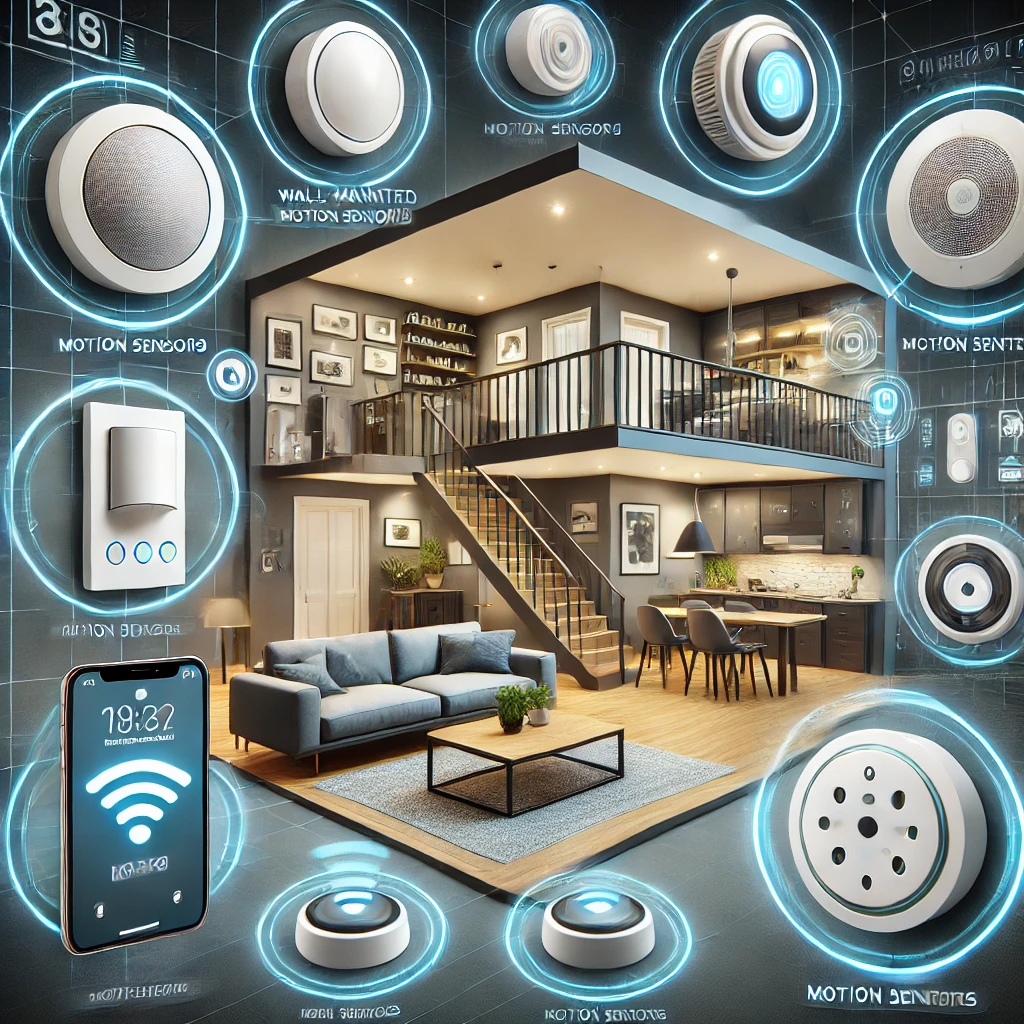Welcome to autohomegadgets.com, where I share expert insights on smart home technology. Over the years, I’ve tested and installed various home automation devices, including home motion sensors. These devices have significantly improved my home’s security and efficiency, and I’m here to help you choose the best motion sensors for your needs.
What Are Home Motion Sensors?
Home motion sensors are devices that detect movement within a specific area and trigger a response, such as turning on lights, sounding an alarm, or sending a notification. The first time I walked into my hallway and the lights turned on automatically, I knew I had made a wise investment. These sensors use various technologies to detect motion, each with its own set of advantages.
The Science Behind Home Motion Sensors
Understanding how motion sensors work can help you make the best choice for your home. Here’s a breakdown of the main types:
Passive Infrared (PIR) Sensors
PIR sensors detect infrared radiation emitted by warm objects, such as humans and animals. When I installed PIR sensors in my home, I noticed how accurately they picked up human movement while ignoring smaller pets. These sensors are ideal for indoor use, particularly in areas like living rooms and bedrooms.
Ultrasonic Sensors
Ultrasonic sensors emit high-frequency sound waves that bounce off objects and return to the sensor. These sensors are great for areas with complex layouts, as they don’t require a direct line of sight to detect movement. In my home, I use ultrasonic sensors in the basement and garage, where their wide coverage is particularly useful.
Microwave Sensors
Microwave sensors use electromagnetic waves to detect motion. They are highly sensitive and can detect movement through walls. I’ve seen these sensors used in both residential and commercial settings. In my home, they provide excellent coverage in the backyard, ensuring no intruders go unnoticed.
Tomographic Sensors
Tomographic sensors create a mesh network using radio waves. When an object disrupts this network, the sensor detects the movement. These sensors are perfect for large, open spaces. I use them in my workshop, where they provide comprehensive coverage without any blind spots.
Top Brands in Home Motion Sensors

Get instant mobile alerts when motion is detected with a Ring Protect subscription. It is an easy installation with no tools required.
2. Beams MB3000 Motion Sensing

The dual-head spotlight provides 500 lumens of bright light for large, dark areas. The LED security light activates when it detects motion from 30 feet away and automatically shuts off 20 seconds after motion stops to prolong battery life.
3. Driveway Alarm, Motion Sensor & Detector.

The wireless weather-resistant driveway alarm motion sensor can be used to monitor and protect your outdoor/indoor property. Such as driveway, front porch, gate, pool, garage, shed, etc. Great for home, business, and office. The sensor will work properly in all the seasons. Working temperatures range from -30 to 150 degrees Fahrenheit.
4. Lutron Maestro Motion Sensor Switch

The Lutron Maestro Motion Sensor switch automatically turns the lights on when you enter the room and off when you leave.

Unlock the power of Hue and enjoy automation control from anywhere in the world, and a secure, stable connection that won’t drain your Wi-Fi. Use Matter to connect your smart home devices to your Hue smart lighting system.
Benefits of Home Motion Sensors
Enhanced Security
One of the main reasons I installed motion sensors was to enhance my home’s security. Motion sensors can trigger alarms, lights, and cameras, deterring potential intruders. The peace of mind knowing that any unexpected movement will be detected is invaluable.
Energy Efficiency
Motion sensors also contribute to energy efficiency. By automatically turning lights on and off, they help reduce electricity consumption. Since installing motion sensors in high-traffic areas like the hallway and bathroom, I’ve noticed a significant drop in my energy bills.
Convenience
The convenience offered by motion sensors is unparalleled. From automatic lighting to smart home integrations, these sensors simplify everyday tasks. For instance, my porch light now turns on as I approach the door, making it easier to unlock when my hands are full.
Customizable Settings
Modern motion sensors offer customizable settings, allowing you to adjust sensitivity, range, and duration. This flexibility ensures that the sensors meet your specific needs. I’ve customized my sensors to avoid false alarms from pets and to ensure optimal performance.
How to Choose the Right Home Motion Sensor
Assess Your Needs
Start by assessing your needs. Are you looking for security, convenience, or energy efficiency? Understanding your primary goal will help you choose the right type of sensor. For example, I prioritized security, so I opted for high-sensitivity PIR sensors.
Consider the Location
The location where you plan to install the motion sensor plays a crucial role in your choice. Outdoor sensors need to be weather-resistant, while indoor sensors should blend seamlessly with your decor. I chose weather-resistant sensors for my garden and aesthetically pleasing ones for the interior.
Sensitivity and Range
Different sensors offer varying levels of sensitivity and range. If you have a large area to cover, consider sensors with a broader range. In my experience, sensors with adjustable sensitivity are ideal for avoiding false alarms from pets or passing vehicles.
Integration with Existing Systems
If you have a smart home system, ensure that the motion sensors you choose are compatible. Integration allows you to control and monitor the sensors through a central hub. My motion sensors are integrated with my smart home system, enabling me to receive real-time alerts on my phone.
Budget
Finally, consider your budget. Motion sensors come in a range of prices, from basic models to advanced systems with multiple features. I found that investing in higher-quality sensors provided better performance and reliability in the long run.
Installing Home Motion Sensors: A Step-by-Step Guide
Step 1: Plan Your Installation
Before you start, plan where you’ll install the sensors. Identify high-traffic areas, entry points, and vulnerable spots. I mapped out my home, marking the ideal locations for each sensor.
Step 2: Gather Tools and Materials
You’ll need basic tools like a drill, screws, and a screwdriver. Some sensors come with adhesive pads for easy installation. I preferred using screws for a more secure fit.
Step 3: Install the Sensor
Follow the manufacturer’s instructions to install the sensor. For wall-mounted sensors, drill holes and secure the sensor with screws. I found it helpful to have a friend assist with holding the sensor in place while I secured it.
Step 4: Test the Sensor
After installation, test the sensor to ensure it’s working correctly. Walk through the detection area and observe if the sensor triggers the desired response. I adjusted the sensitivity settings to avoid false alarms.
Step 5: Integrate with Your System
If you’re integrating the sensor with a smart home system, follow the instructions to connect it to your hub. I used a mobile app to sync my sensors and set up notifications.
Practical Applications of Home Motion Sensors
Home Security
Motion sensors are a cornerstone of modern home security systems. They can trigger alarms, lights, and cameras, deterring intruders. My home security setup includes sensors at all entry points and key areas inside the house.
Smart Lighting
Automatic lighting is one of the most convenient applications of motion sensors. In my home, lights in the hallway, bathroom, and porch turn on automatically when motion is detected, providing safety and convenience.
Energy Management
By turning off lights and appliances when not in use, motion sensors help reduce energy consumption. I’ve installed sensors in my office and living room, ensuring that lights are only on when needed.
Indoor Navigation
In larger homes, motion sensors can assist indoor navigation by automatically lighting up pathways and stairs. This feature has been particularly helpful for me when moving around the house at night.
Pet Monitoring
Motion sensors can be used to monitor pet activity, ensuring they are safe and not getting into restricted areas. I use sensors in the kitchen to alert me if my dog tries to sneak a snack.
Home Automation
Integrating motion sensors with a smart home system allows for advanced automation. For example, when I enter a room, not only do the lights turn on, but my smart thermostat adjusts the temperature for comfort.
Real-Life Examples of Home Motion Sensors
My Home Setup
In my home, motion sensors are an integral part of the security and automation system. The sensors at the front and back doors trigger security cameras, while indoor sensors control lighting and monitor movement.
Office Environment
In my home office, motion sensors help manage energy consumption by turning off lights and equipment when not in use. This has not only reduced energy costs but also contributed to a greener work environment.
Smart Apartments
In modern smart apartments, motion sensors are used to enhance security, automate lighting, and manage energy use. During my stay in a smart apartment, I experienced how seamlessly integrated motion sensors made living more convenient and efficient.
Public Spaces
Public spaces like parks and parking lots benefit from motion sensors that control lighting, enhancing safety and reducing energy usage. I’ve noticed how well-lit these areas become as I approach, thanks to motion sensors.
Smart Cities
Motion sensors are key in smart city initiatives, monitoring traffic, enhancing security, and managing public lighting. During a trip to a smart city, I saw how sensors improved traffic flow and public safety.
Common Misconceptions About Home Motion Sensors
They Are Expensive
While some advanced models can be pricey, there are affordable options available. I found that investing in good-quality sensors was worthwhile for the security and convenience they provided.
They Are Complicated to Install
Many motion sensors are designed for easy installation. With a little planning and basic tools, most people can install them without professional help. My DIY installation was straightforward and rewarding.
They Are Prone to False Alarms
Modern motion sensors come with adjustable sensitivity settings to minimize false alarms. By fine-tuning these settings, I’ve avoided unnecessary alerts from pets and passing cars.
They Are Only for Security
Motion sensors have a wide range of applications beyond security, including automation, energy management, and indoor navigation. I’ve found them incredibly versatile in various aspects of daily life.
Tips for Maintaining Home Motion Sensors
Regular Testing
Regularly test your motion sensors to ensure they are functioning correctly. I schedule monthly checks to walk through the detection areas and confirm the sensors respond appropriately.
Clean the Sensors
Keep the sensors clean and free from dust and debris. This ensures optimal performance. I use a soft cloth to gently wipe the sensors during my regular cleaning routine.
Check Batteries
If your sensors are battery-operated, check the batteries regularly and replace them as needed. I keep spare batteries on hand to ensure uninterrupted operation.
Update Firmware
For smart motion sensors, keep the firmware updated to benefit from the latest features and improvements. I receive notifications on my app when updates are available, making it easy to stay current.
Future Trends in Home Motion Sensor Technology
Integration with AI
Artificial Intelligence (AI) is enhancing motion sensor capabilities. AI can analyze motion patterns, reducing false alarms and providing more accurate detection. I’m excited about how AI integration could make sensors even smarter and more reliable.
Advanced Sensing Technologies
New sensing technologies, such as 3D motion sensors and quantum sensors, are being developed. These technologies promise higher accuracy and more applications. I’m particularly interested in how 3D sensors could improve security systems.
Energy Harvesting Sensors
Future motion sensors may be powered by energy harvested from their environment, reducing the need for batteries. This innovation could make sensors more sustainable and cost-effective in the long run.
Expanded Smart Home Integration
As smart home ecosystems continue to grow, motion sensors will play an even more significant role. Integration with other smart devices will offer enhanced automation and control. I look forward to exploring new ways to integrate motion sensors into my smart home.
Conclusion
Home motion sensors are an essential part of a smart security system. They provide peace of mind, enhance automation, and improve energy efficiency. With my hands-on experience testing various models, I can confidently say that choosing the right motion sensor depends on your home’s specific needs and smart home ecosystem.
For more smart home guides and reviews, stay updated on autohomegadgets.com!

SAMMY MWANGI the editor of Autohomegadgets.com. He is an Electronics Technician enthusiast and a Sales Manager in one of the leading ICT companies in Africa. When he is not working, he loves to travel and explore nature. He is a Robot fanatic too.


